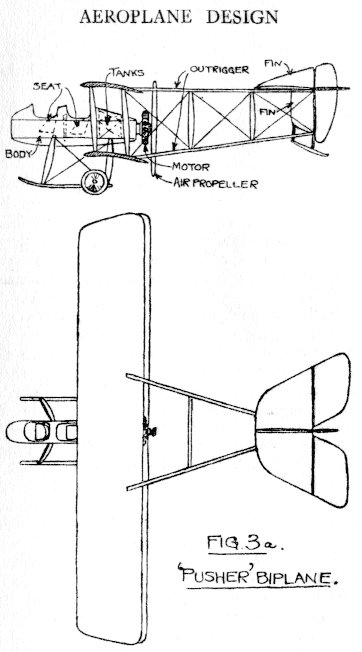Inherent Stability in 1916
Today, we worry about airplane stability in 1916. The University of Houston's College of Engineering presents this series about the machines that make our civilization run, and the people whose ingenuity created them.
By 1916, aeroplanes had barely been invented. Designers at every level of sophistication were furiously sorting possibilities and configurations. The new science of aerodynamics was revealing unexpected traps -- things beyond the reach of intuition.
Great Britain was bending to the task of fighting WW-I when, in 1916, a small book on aeroplanes appeared. It had two sections bound under one cover. One told about aeroplane design; the other about stability. War meant secrecy, so this necessarily represented thinking from before the war, when aeroplanes were little more than a decade old.
The section on design tells how forces interact. How far off the engine's thrust axis should the wing (or wings) be tilted? The forces exerted by each of a biplane's wings might act differently. The weight of a human being was a big fraction of the weight of a delicate old flying machine. A pilot could upset flight by shifting his weight with respect to the aeroplane's center of gravity.
Designers had to be concerned with the pilot's strength. In a tight turn, he had not only to turn the rudder against the wind, he had also to turn it against centrifugal forces. Charts, graphs, and equations treat all these issues in fine terse detail.
But then, like the fourth tempter, arriving quite out of the blue in T. S. Eliot's play Murder in the Cathedral, part II of the book rears its head. This section on inherent stability precedes the expectations of readers. For the issue of stability had only recently emerged like a toad from under a rock. Should aeroplanes be stable in flight? Every fiber of our intuition told us they should.
Disturb the level flight of an inherently stable aeroplane, and it'll return to steady motion. A truly stable airplane, placed in the air at any speed or angle, would right itself and glide safely to Earth. But that misses a serious subtlety.
Few, if any, airplanes are that stable. Many modern jets would simply sink like a stone. The designs of the then-newly evolving combat biplanes would grow increasingly unstable. They could easily go into a tailspin from which only a skilled pilot could recover.
And so the author struggled to resolve a debate that was only just taking form. Was stability good or bad? After forty pages on the mechanics of stability, he cast his lot with stable airplanes.
But it was too soon; flight was too young. He had too few of the new flying machines to guide his thinking. Aeroplanes were now going to war, and they'd all have fly like stunt planes.
A century ago this designer gave us a fine double legacy. Any engineering student could learn so much from his crisp, clean discussions of stability. But that same student could learn just as much from the author's acceptance of the commonsense, but misleading, idea that stability should be an end in itself.
I'm John Lienhard, at the University of Houston, where we're interested in the way inventive minds work.
(Theme music)
Barnwell, F. S., Aeroplane Design and Sayers, W. H., A Simple Explanation of Inherent Stability. London: McBride, Nast & Co., 1916/1917.
